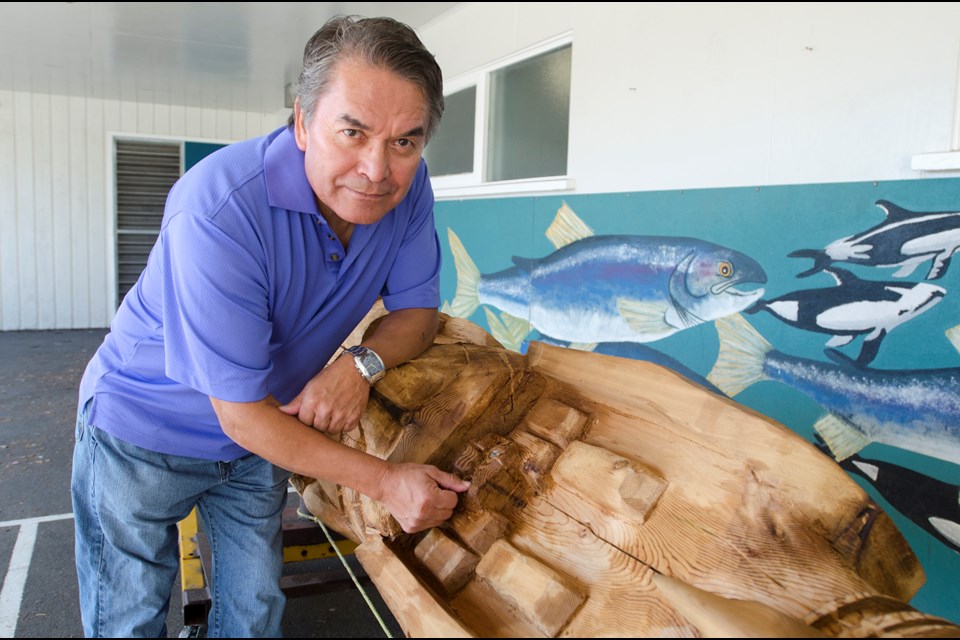Brentwood Park celebrated the transformation of an old driving range pole into a traditional First Nations work of art and symbol of community last month.
The school held a ceremony on Oct. 20 to honour its newly completed totem pole.
The pole is the work of First Nations carver Jackie Timothy, who started on the project in February.
Set up outside the school in a sheltered area, Timothy laboured at the carving for months, interacting with students, who often watched, chatted and helped clean up his work space.
“The kids have been really a blessing to me,” said Timothy, who is originally from the Tla’amin First Nation near Powell River.
At an assembly last month, the school gathered longhouse-style, sitting around the outside of the gym to make room for performances by students and the Urban Kwakwa’wakw Cultural Group.
The event culminated when the entire student body sang the woman warrior song accompanied by drums they had made themselves.
The students then presented Timothy with a drum they had made specially in his honour.
The totem Timothy leaves behind started out in February as a seven-foot, 1,500-pound segment of a driving-range pole pulled from the Burnaby Mountain Golf Course in 2010.
Now standing outside the Brentwood Park school office, the completed work features an eagle on top and a mother bear holding a human being at the base.
The benefits of the $10,000 project – funded by the school’s parent advisory council, the school and the school district – are “multifaceted,” according to Brentwood Park principal Jillian Lewis.
“There’s the community building that goes on through the totem process, and having Jackie at our school was an extraordinary experience for us for the last several months,” she told the NOW. “It’s having a visual representation of aboriginal culture so that our aboriginal students see themselves in our school experience and our non-aboriginal students see aboriginal culture just as part of their everyday life. … For us, we’re looking to the future when everyone in Canada is aware and appreciative of aboriginal culture, not just aboriginal people.”



